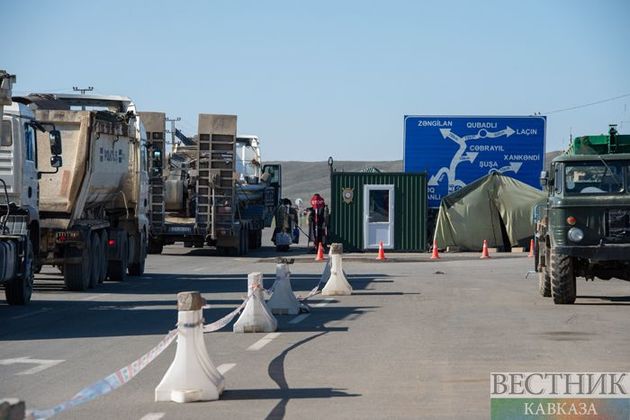Shusha was the key to the recent war between Azerbaijan and Armenia. Now Baku wants to turn the fabled fortress town into a resort, Foreign Policy writes. Nagorno-Karabakh—Above a valley carpeted with dense pine forest, the rocky cliff that leads to the town of Shusha is riddled with scars left by the impact of thousands of bullets. It is so pockmarked that the damage looks like residue left by heavy summer rain—it is here that last year’s Nagorno-Karabakh war was won.
The hilltop town, the showpiece of Azerbaijan’s victory, was the site of one of the last and bloodiest battles of the brutal six-week war with Armenia. Smashed windows and war-damaged walls still line the empty streets. Yet today, nearly a year after the end of the war, Azerbaijan is bent on turning Shusha into a tourist resort. The immediate area has been cleared of ordnance, and transport links from Azerbaijan are being built at breakneck speed.
The enclave’s first airport was formally inaugurated this week in the district of Fuzuli, and over the last 10 months, a 60-mile “Victory Road” has been built connecting Fuzuli to Shusha. Two hotels have also been renovated, and work on a new rail line began this month.
Shusha is thought of as the beating heart of Karabakh, itself part of an enclave long disputed by Azerbaijan and Armenia. A natural fortress surrounded by sheer cliffs, the town has strategic significance: Overlooking the vital city of Khankendi, Shusha is considered to be the key to Karabakh. The city’s fall in the last war allowed Azerbaijani troops to march into the outskirts of Khankendi; Armenia almost immediately agreed to peace terms. But it’s more than a fortress. It has been home to poets and musicians of both ethnicities since it was established by a Turkic Persian khan in the 18th century. In May, Azerbaijan declared Shusha its cultural capital.
Nagorno-Karabakh and seven adjacent regions—all of which are recognized internationally as part of Azerbaijan—had been under Armenian control since the first Karabakh war in the early 1990s. While much of the enclave itself is still administered by ethnic Armenians, Azerbaijan aims to reintegrate the areas it reclaimed by connecting them to its power grid and road network.
Armenia has had to accept that the city is lost with little chance of getting it back, said Richard Giragosian, the director of the Regional Studies Center, a think tank in Yerevan. But plans to turn it into a tourist resort, he said, are seen in Armenia as “gloating.” “For the Armenian government, the stark postwar reality necessitates a painful yet clear acceptance of the losses, including the city of Shushi,” he said. “As with the acceptance of the Russian-imposed cease-fire that ended the war, for Armenia, there is no alternative and little recourse.”
Some of the land lies entirely derelict, scattered with the ruins of the first war, as well as the burned-out remains of the houses Armenians set fire to as they fled last year. Development is being hampered by the presence of landmines and unexploded weaponry.
Some of the Azerbaijanis displaced from Karabakh in the first war will be able to start returning next year. It might take a little longer to resettle residents in Shusha. Aydin Karimov, Aliyev’s representative to Shusha, said it could take a year and a half for residential buildings to be ready to receive returning residents, but tourists are expected to arrive as early as next year. “Our current plan is to rebuild infrastructure such as power supplies, but we are thinking about development in terms of giving opportunities for Shusha’s residents. We have prioritized setting up a school and a hospital,” he said. The tourist development, he hopes, will serve as an economic anchor for a region that otherwise lives off agriculture and remittances. “We began by working with what we have so we can receive tourists—when you receive tourists, then you need people to serve them. It means the future residents will have plenty of work opportunities,” Karimov said.
The changes in Shusha are brought home most clearly by the fate of Holy Savior Cathedra. During the war, Azerbaijani shells partially collapsed the cathedral’s roof. Baku plans to scrap the last three decades of Armenian adaptations and restore Holy Savior using Soviet-era plans for the building.
32-year old Ersham wants to plant a memorial tree for his father whj died on the day Armenian forces took Shusha in 1992. He and the rest of the family fled, ending up in Baku in recent years. “Baku is nice, but nothing is as important to me as Shusha. To know it is with our people gives me great comfort,” Ersham said on the sidelines of the planting ceremony. “We have waited long years to return. These are not just our damaged home—they are our childhoods and our memories.”






